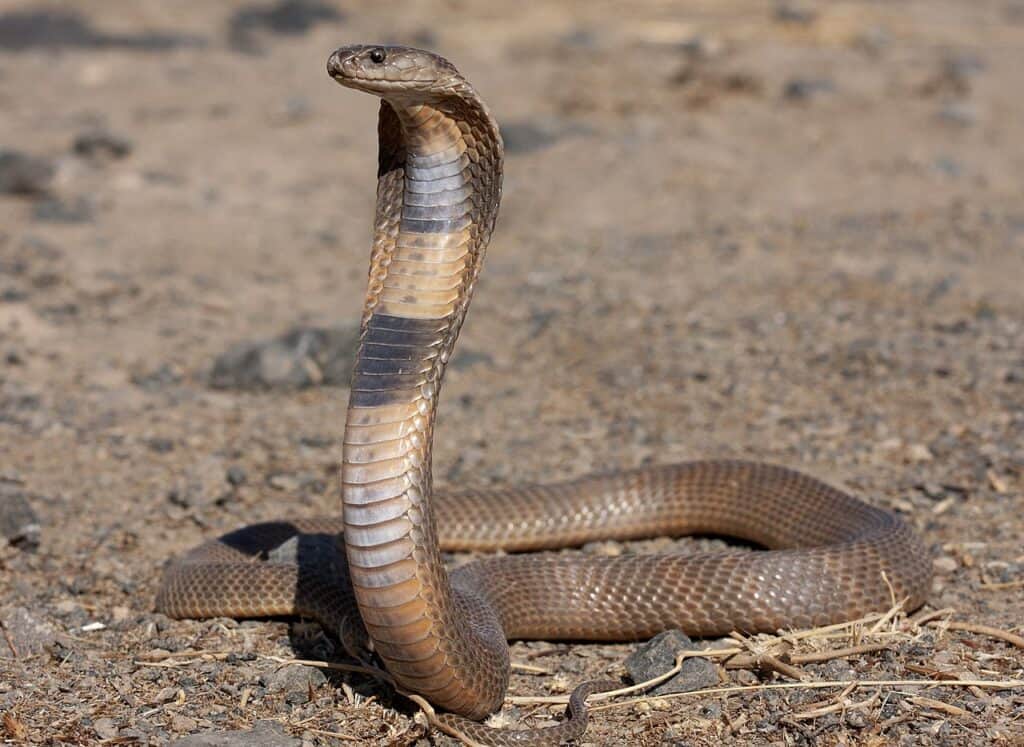What is the cobra effect? The cobra effect is the most direct type of perverse incentive. This effect occurs when authorities put incentives in place to solve a problem. However, these incentives result in worsening the situation. In these cases, the aggravated problem often leads to new issues or the preventable worsening of others. This cobra effect is not a recent phenomenon. And it has taken many forms since the origination of the phrase or concept, so let’s find out more.

The meaning of the cobra effect is implementing policy for one thing and generating unintended, often damaging side-effects in a different area.
©Ali Khani / Creative Commons – License
What Is the Meaning of the Cobra Effect and Its Origins?
The term cobra effect originated in India when the country was under British rule. India is known to have many different types of venomous snakes, and the British government was concerned about this risky situation. Consequently, the city of Delhi was swarming with venomous cobras at the time, leading to the British government offering a reward for every dead cobra that citizens handed to authorities. During the beginning stages of this initiative, it was successful as citizens killed many snakes for monetary benefit. But things eventually took an unexpected turn.
Opportunistic entrepreneurs saw a gap in the market. So they started breeding the venomous cobras to kill and hand them in for financial gain. This breeding scheme worked for a while before the British government uncovered the deception. The government ended the initiative, leaving the cobra breeders with thousands of worthless venomous cobras. The breeders then released the cobras, inadvertently increasing the wild cobra population.
Modern Examples of the Cobra Effect
The cobra effect did not end in India but has been seen all over the planet.
HFC-23 – Gas for Cash Cobra Effect
In 2013, the European Union offered carbon credits to destroy a damaging coolant called HFC-23. Unfortunately, this policy encouraged companies to start producing this harmful gas to collect millions of dollars in carbon credits. As a result, the European Union eventually suspended this initiative.
Cash for Ash – The Hot Cobra Effect
After introducing their Cash for Ash initiative, Northern Ireland also experienced the cobra effect. The country started a renewable heat initiative in 2012. There was also a UK-wide effort to reduce carbon emissions by switching from fossil fuels to renewable sources. The problem began when the government department made the value of the subsidy for this initiative greater than the value of the cost of wood pellets used to heat boilers. This policy drove people to leave their boilers on for most of the day, if not all day long. Their behavior drastically increased carbon emissions, quickly turning the initiative into a fiasco.
Buyback Event for Guns – Snakes Alive!
Another instance of the cobra effect is the buyback event for guns in Houston. This buyback event is an anti-crime initiative called “One Safe Houston.” The event aims to reduce violent crime across the city and allow people to relinquish their guns in exchange for money voluntarily. This event allocated a $1 million budget for payouts. Unfortunately, the cobra effect came into play when a man sold 62 homemade 3-D printed guns to the city. According to the man, one gun cost $3 to print, for which the project paid him $50. This exchange meant the man spent $186 to print the weapons in return for $3,100. The mayor of Houston found out about the man’s scheme. He included an immediate policy exclusion for 3-D printed guns in the initiative.
COVID-19
In one specific case, the cobra effect also almost came into operation during the COVID-19 pandemic. In the pandemic’s early stages, a local donation center offered $100 per visit for those with COVID-19 “convalescent plasma.” Because younger people were less at risk for severe COVID-19 symptoms, the offer appealed to anyone who could contract the virus. However, when Brigham Young University heard about the project and its cobra effect, they issued a stern warning. They stipulated they would permanently suspend any students who intentionally exposed themselves or others to COVID-19, with the risk of permanent dismissal.

The cobra effect was narrowly diverted when Brigham Young University warned students not to deliberately expose themselves to COVID-19 in exchange for money.
©Fit Ztudio/Shutterstock.com
How To Avoid the Cobra Effect in the Future
The leading cause of the cobra effect is linear thinking. Linear thinking often feels like the easiest way to solve a problem. In theory, it is the most efficient way to get from one place to another. But this type of thinking excludes external factors and the possibility of unforeseen consequences, like the cobra effect.
Dynamic Systems
To avoid the cobra effect, you would need to understand dynamic systems. Dynamic systems consist of two feedback loops: reinforcing feedback and balancing feedback. Reinforcing feedback, also known as positive feedback, keeps the desired effect going. Balancing feedback, also known as negative feedback, keeps dynamic systems balanced. Dynamic systems permit people to plan properly and see the bigger picture instead of blindly hoping for the best.
Mental Models
You can also apply mental models to avoid the cobra effect. Mental models are a valuable thinking tool that can help to predict the potential consequences of certain decisions. When planning and making decisions, people often have limited information, making it difficult to predict the possible outcomes. Basically, mental models function as cognitive rules of thumb to lessen any unintended consequences when people have to make choices. Mental models are preferable to linear thinking.

What is the meaning of cobra effect? Avoiding unintentional outcomes, which you can do with second-level thinking and a systems approach.
©iStock.com/takeo1775
Second-Level Thinking – Best Defense Against Cobra Strikes
Another way to avoid the cobra effect is to use second-level thinking. Dynamic systems and mental models function well to avert the cobra effect. Still, second-level thinking may be the most effective way to prevent this effect. This perspective is because second-level thinking forces people to consider the complex ramifications of the decisions made. So, to use second-level thinking, you must lay down the second and third-order consequences. Thinking about possible outcomes means considering your biases, ruling out the noise, and using a thinking system approach. This strategy will ensure you can make the most favorable decision.
Planning Well Helps Avert the Cobra Effect
When planning for things or starting initiatives, critical and strategic thinking is a crucial part of the process. one of the most vital parts of planning is considering as many possibilities as possible. Developing scenarios about potential adverse effects is part of planning and how an initiative can impact individuals, the situation, and society. Dynamic systems and mental models work well to avoid the cobra effect. But second-level thinking is the best chance you’ll have to prevent this unwanted consequence.
The photo featured at the top of this post is © iStock.com/Nynke van Holten
Discover the "Monster" Snake 5X Bigger than an Anaconda
Every day A-Z Animals sends out some of the most incredible facts in the world from our free newsletter. Want to discover the 10 most beautiful snakes in the world, a "snake island" where you're never more than 3 feet from danger, or a "monster" snake 5X larger than an anaconda? Then sign up right now and you'll start receiving our daily newsletter absolutely free.
Thank you for reading! Have some feedback for us? Contact the AZ Animals editorial team.






